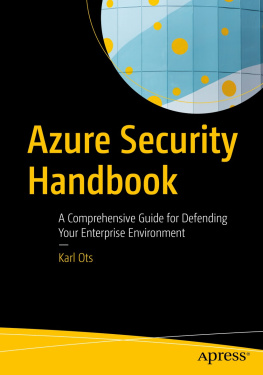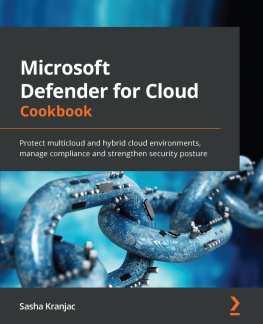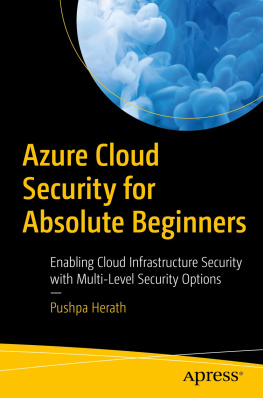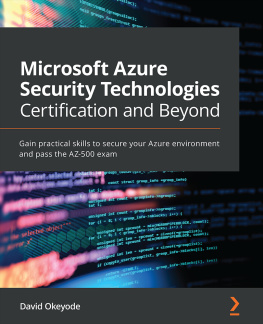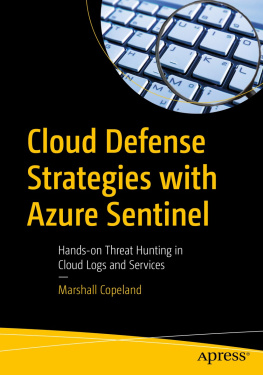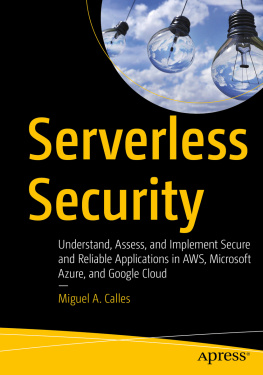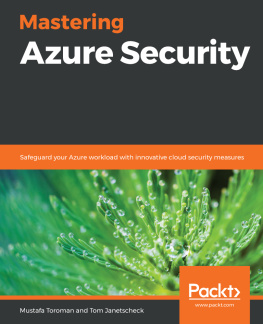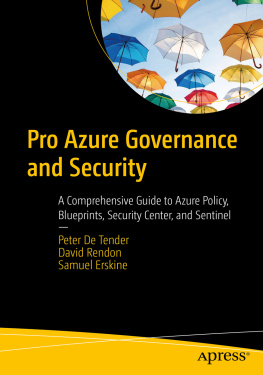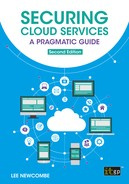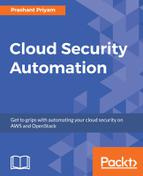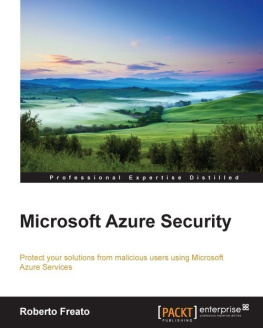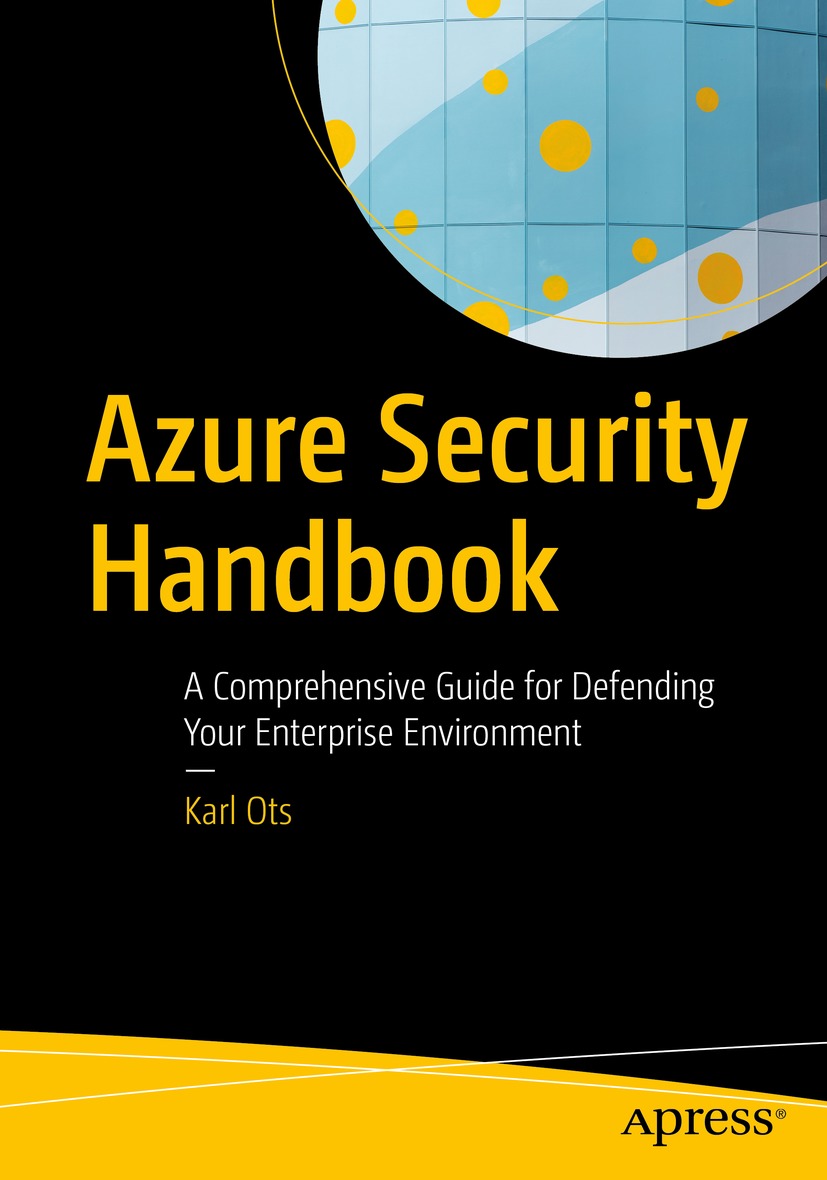Karl Ots - Azure Security Handbook: A Comprehensive Guide for Defending Your Enterprise Environment
Here you can read online Karl Ots - Azure Security Handbook: A Comprehensive Guide for Defending Your Enterprise Environment full text of the book (entire story) in english for free. Download pdf and epub, get meaning, cover and reviews about this ebook. year: 2021, publisher: Apress, genre: Romance novel. Description of the work, (preface) as well as reviews are available. Best literature library LitArk.com created for fans of good reading and offers a wide selection of genres:
Romance novel
Science fiction
Adventure
Detective
Science
History
Home and family
Prose
Art
Politics
Computer
Non-fiction
Religion
Business
Children
Humor
Choose a favorite category and find really read worthwhile books. Enjoy immersion in the world of imagination, feel the emotions of the characters or learn something new for yourself, make an fascinating discovery.
- Book:Azure Security Handbook: A Comprehensive Guide for Defending Your Enterprise Environment
- Author:
- Publisher:Apress
- Genre:
- Year:2021
- Rating:5 / 5
- Favourites:Add to favourites
- Your mark:
Azure Security Handbook: A Comprehensive Guide for Defending Your Enterprise Environment: summary, description and annotation
We offer to read an annotation, description, summary or preface (depends on what the author of the book "Azure Security Handbook: A Comprehensive Guide for Defending Your Enterprise Environment" wrote himself). If you haven't found the necessary information about the book — write in the comments, we will try to find it.
Did you know that the most common cloud security threats happen because of cloud service misconfigurations, not outside attacks? If you did not, you are not alone. In the on-premises world, cybersecurity risks were limited to the organizations network, but in the era of cloud computing, both the impact and likelihood of potential risks are significantly higher. With the corresponding advent of DevOps methodology, security is now the responsibility of everyone who is part of the application development life cycle, not just the security specialists. Applying the clear and pragmatic recommendations given in this book, you can reduce the cloud applications security risks in your organization.
This is the book that every Azure solution architect, developer, and IT professional should have on hand when they begin their journey learning about Azure security. It demystifies the multitude of security controls and offers numerous guidelines for Azure, curtailing hours of learning fatigue and confusion. Throughout the book you will learn how to secure your applications using Azures native security controls. After reading this book, you will know which security guardrails are available, how effective they are, and what will be the cost of implementing them. The scenarios in this book are real and come from securing enterprise applications and infrastructure running on Azure.What You Will Learn
- Remediate security risks of Azure applications by implementing the right security controls at the right time
- Achieve a level of security and stay secure across your Azure environment by setting guardrails to automate secure configurations
- Protect the most common reference workloads according to security best practices
- Design secure access control solutions for your Azure administrative access, as well as Azure application access
Who This Book Is For
Cloud security architects, cloud application developers, and cloud solution architects who work with Azure. It is also a valuable resource for those IT professionals responsible for securing Azure workloads in the enterprise.Karl Ots: author's other books
Who wrote Azure Security Handbook: A Comprehensive Guide for Defending Your Enterprise Environment? Find out the surname, the name of the author of the book and a list of all author's works by series.

